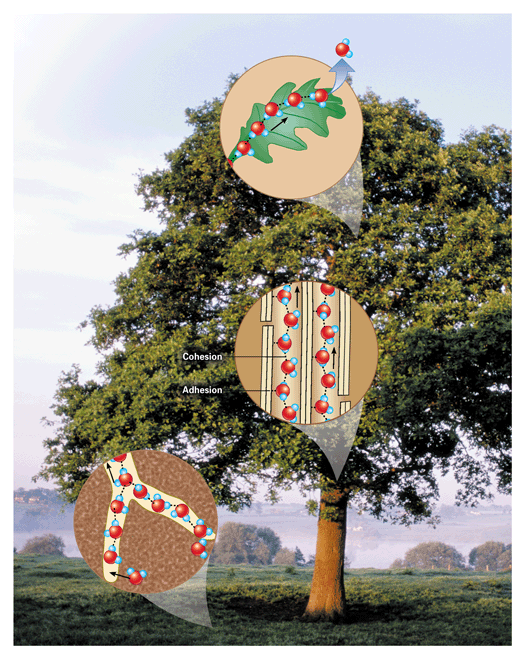 Cohesion and adhesion contribute to the rise of water molecules within a tree's water transport system. The dotted lines in the diagram indicate hydrogen bonds.
Cohesion and adhesion contribute to the rise of water molecules within a tree's water transport system. The dotted lines in the diagram indicate hydrogen bonds.
All the water inside the coconuts comes from the ground. As one molecule of water evaporates from the leaves during transpiration, another molecule rises up to fill its place and this goes on in succession throughout the tall stem right from the roots.
The secret lies in the force of cohesion and adhesion. Cohesion is the molecular attraction by which the particles of a body are united throughout the mass. Adhesion causes the water molecules to adhere to the xylem walls and because of cohesion, the water molecules remain together and move up as a stream. Any break in this column, makes ascent of sap difficult.
Most of the transpiration is from the leaves through the stomata. The cells around the stomata absorb water from the neighboring cells. Ultimately water is drawn from the xylem in the leaves. This results in a negative water potential in the upper portions of the xylem tube. Negative water potential means low pressure. Low pressure draws the water up from the lower regions–first the stem and then the roots of the xylem tube that have positive water potential and therefore, high pressure. The water moves up the plant as a result of the potential gradient. This gradient has developed due to transpiration. So, the force with which the water is pulled up the xylem is called the transpiration pull.